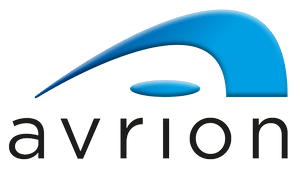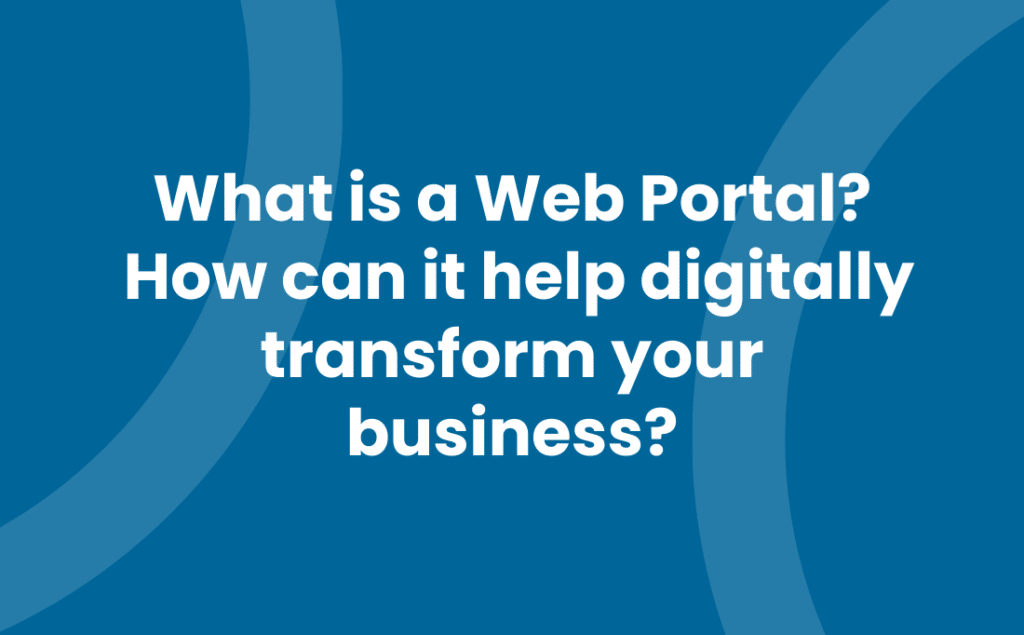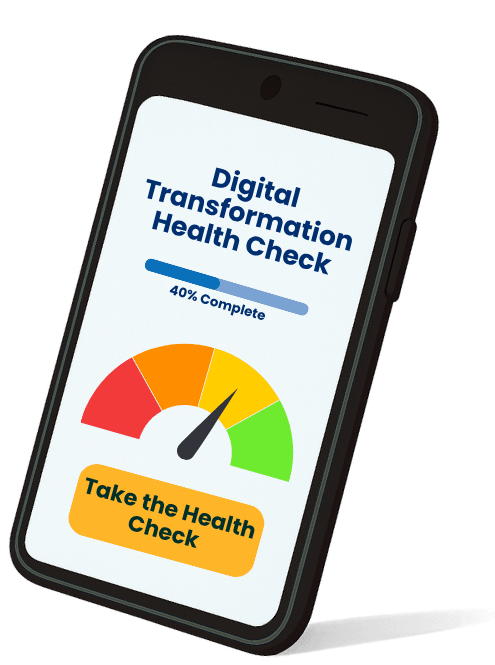Ever wondered about the difference between a website and a web portal? Well, it’s high time you got acquainted with the concept of web portals, also known as portal websites or web gateways. They’re not just your regular websites, they’re designed with a specific, target-oriented audience in mind. From company staff and state residents to site visitors and clients, web portals cater to a niche crowd.
Diving a bit deeper, there are two core types of web portals you should know about: vertical and horizontal. Vertical web portals are all about specific business functions, while horizontal ones provide a broader view, aggregating data from multiple applications. So, whether you’re a student, an employee, or just a curious internet user, there’s a web portal out there for you. Let’s unpack this further.
Key Takeaways
- A web portal is a specialised website designed to cater to a specific target-oriented audience, offering a blend of personalised content, functionality and design. They come in two types – vertical and horizontal.
- Vertical web portals are for specific business applications and targeted audience, enabling users to interact, contribute and streamline processes within the targeted application.
- Horizontal web portals provide a wide viewing ability by aggregating data from multiple applications, catering to a broader spectrum of internet users.
- A web portal’s aim is not just to be user-friendly, it’s about facilitating seamless interaction, access to relevant resources, and enriched content based on user context.
- Well-designed web portals serve a crucial function of process automation, improving operational efficiency and reducing costs through handling repetitive tasks and streamlining processes.
- The difference between websites and web portals lies in the personalisation and the audience they cater to. Websites serve generic information to general internet users while web portals offer specialised content to a targeted audience.
- When choosing a web portal for your business, it’s essential to consider your audience’s needs and your business goals. A horizontal portal may be suitable for a more general audience, while a vertical web portal might be better when catering to a particular group or sector.
Understanding Web Portals
A web portal, also known as a portal website, portal site, or web gateway, offers a unique blend of personalised content, functionality, and design that caters to specific audience needs. What makes a good web portal? It’s not just about being user-friendly. It’s about facilitating seamless interaction, providing quick access to relevant resources, and serving enriched content based on the user’s context.
Consider the most visited web portals in 2022:
| Web Portal | Visits (in billion) |
|---|---|
| 855 | |
| YouTube | 338 |
| 190 |
These portals lead the scene because they offer customised user experiences. As a business, choosing the best web portal for your business, might seem daunting, but understand that the key is to focus on meeting your target audience’s specific needs.
Web portals primarily come in two varieties: Vertical and Horizontal.
Vertical web portals focus on specific business or application functions. Imagine portals that target accounting and finance, customer relationship management (CRM), or service management sectors. Can you visualise how a student web portal or an employee web portal functions? That’s a vertical web portal. It enables users, both the members and visitors, to see, edit, and contribute to processes within an application.
On the flip side, horizontal web portals aggregate data from multiple applications, providing a broad viewing ability to the user. Unlike vertical portals, they cater to the whole internet, not just personalised access for specific audiences. Examples of these include public service portals and knowledge management portals.
A proficient web portal serves another crucial function – process automation. Web portals can automate business processes, improving operational efficiency and reducing costs.
Through this deep dive, you’ll find answers to your questions like, “what is a web portal”, “what makes a good web portal,” and how to go about “choosing the best web portal for your business”. Remember, a well-designed web portal goes beyond aesthetics; it integrates user-centric design, relevant functionalities, and — most importantly — value for the user.
The Difference Between Websites and Web Portals
Web portals and websites seem similar on the surface, but there are distinguishing factors setting them apart. Just like apples and oranges, both serve their unique purposes but shouldn’t be mistaken for one another.
Websites are essentially digital storefronts, offering standardized information to general internet users. Conversely, web portals are like digital doormen, offering specialised content based on user needs and authorisations.
Unlike a website, a web portal provides a personalised, comprehensive interface. Here, user login, analytics dashboard, chat navigation and business-specific features coalesce, fashioning a distinct user journey. As you walk through this virtual space, it’s like being in a digital building with rooms specially outfitted for you. Many portals even offer cross-platform access, welcoming you no matter the device in your hand.
And who are these made-for spaces intended for? They’re crafted for very defined, target-oriented audiences – company staff, state residents, site visitors, members, clients, and partners. The focus is narrower, deeper, concentrating on a specific group or function.
For instance, take the case of the world’s top visited portals in 2022 – Google, YouTube, and Facebook with user visits standing in billions.
| Portal | User visits (billions) |
|---|---|
| 855 | |
| YouTube | 338 |
| 190 |
One thing’s clear: When it comes to these spaces, it’s not about who visits but why. Each visit serves a specific purpose – finding information (Google), watching videos (YouTube), or connecting with family and friends (Facebook).
That’s why, choosing the best web portal for your business is crucial. It’s akin to choosing the right door for your users to walk through, leading to the right room, filled with just what they need.
Such careful crafting is why portal development isn’t just website development. It’s almost akin to building a smart house – one that knows and serves its residents’ needs, readily adapting and learning. They are a crucial component in the realm of process automation. Covering various operational aspects, portals take over repetitive tasks, streamlining processes, and reducing cost overheads.
Target Audience of Web Portals
So, you’re familiar with what a web portal is, now let’s dive into its target audience. Knowing this can prove invaluable when it comes to choosing the best web portal for your business. Remember, it’s not just about fishing in the digital ocean; it’s about knowing the right waters to cast your net.
There are two categories of web portals: Vertical Web Portals and Horizontal Web Portals. Each type caters to a different audience, offering unique solutions.
Vertical Web Portals
Let’s start with vertical web portals. They’re designed for specific business application functions like accounting, finance, CRM, service management or company management. In other words, they’re a bit niche – a specialty store in a sprawling digital mall.
Notably, vertical web portals are interactive platforms where members and visitors can view, edit, and contribute to processes within a given application. For instance, a student web portal, an employee web portal, or a patient portal fall under this category. These portals serve a target-oriented audience – individuals or entities specifically interested in the content or services provided.
Horizontal Web Portals
On the other hand, we have horizontal web portals. What makes them different? They’re sort of a one-stop-shop for information, offering data from multiple applications via a single view experience. Think of these portals as a departmental store where you have access to diverse sectors under one roof.
Horizontal web portals don’t specifically target an audience, rather they serve the entire internet. Public service portals and knowledge management portals are classic examples of horizontal web portals. These portals provide a plethora of information, appealing to a wider net of users across the spectrum.
Pondering Portal Choices
With all this information in mind, you may ask, what makes a good web portal? The answer? It comes down to your audience’s needs and your business goals.
If you’re catering to a wider, general audience, a horizontal portal may be your go-to choice. But if you’re looking to streamline operations and specifically address the needs of a certain group, a vertical web portal might be what’s needed. Either way, remember that your chosen portal should reflect the unique needs and interests of your target users for successful engagement and user satisfaction.
Types of Web Portals: Vertical vs. Horizontal
Diving deeper into the matter, it’s sensible to have a good knowledge of the types of web portals, which are broadly categorised into two – Vertical and Horizontal web portals. These two types represent distinct utility features, serving diverse business functions and audience needs – but what makes a good web portal, and how might you go about choosing the best web portal for your business?
Vertical Web Portals are specialised platforms catering to specific business functions like accounting or CRM. Playing a role in process automation with web portals, they offer interactive platforms for an audience with particular needs. Suppose you’re in the healthcare sector; a vertical portal for healthcare could provide a unified platform for everything from patient record management and scheduling to billing.
These portals have a targeted focus, streamlining complex procedures and enhancing the efficiency of tasks. It’s almost like having a personalised assistant for specific business domains, promoting productivity and user satisfaction. But remember, the utility is as wide or narrow as the specific area it embraces.
Contrastingly, Horizontal Web Portals are designed as universal platforms, appealing to a broader audience. Regardless of your specific requirements, a horizontal portal comes packed with diverse information from various fields. These portals function as one-stop-shops, perfect for those in need of various services. A classic example would be a company intranet portal, featuring everything from HR modules and company updates to discussion forums and project management tools.
Horizontal portals are jack-of-all-trades platforms that attract a wider user base. They’re generalists, excellent for providing a wide-angle view of different directions. Despite a broader focus, they ensure user engagement by offering a range of services.
Choosing the best web portal for your business is a crucial decision, wrapped up in understanding your audience’s needs and your business goals. If your objectives are highly specific and sector-focused, a vertical portal could be perfect. If, however, your needs are diverse and you need a wide range of services, consider going for a Horizontal portal. Each portal type brings distinct advantages. Identify the unique requirements of your target audience to ensure you’re making a decision that’ll lead to engagement and user satisfaction.
Finding the Right Web Portal for You
In the sea of web portals, finding the right one that caters to your specific needs seems daunting, doesn’t it? Fear not! You’re about to delve into what makes a good web portal and how you can choose the best one for your business.
First and foremost, a good web portal should provide intuitive and flexible search features. It should ideally utilise an application programming interface (API) to allow users to search through intranet content, essentially acting as a filter that restricts which domains can be searched. By doing so, it improves the relevance and efficiency of user searches.
Furthermore, a web portal should offer more than just a search feature. It needs to provide a hub of services, such as email, news, stock quotes, database information and even entertainment content. Think of it as a mini digital ecosystem that wraps all these elements into one accessible platform.
Additionally, an asterisk web portal should strive beyond the provision of services. It should also give its users an enjoyable experience. This means displaying a consistent look and feel, ensuring users gain a seamless interaction when moving between different applications and databases.
Very importantly, a web portal must have routine access controls and procedures in place. This allows organisations and enterprises to manage who has access to certain information or services. Whether an authorized user like an employee or a member, or an anonymous website visitor, the available features should be managed accordingly and updated per the user’s access credentials.
Lastly, given the pace of today’s digital world, businesses need their operations streamlined and automated. A good web portal excels in process automation. Be it administrative tasks, document management or workflow processes, the right web portal can effortlessly automate these tasks, thereby improving operational efficiency and productivity.
So when you’re evaluating which web portal is best for your business, recall these considerations. Bear in mind that not all portals will tick all these boxes but having a majority support your business needs will steer you in the right direction. Remember, the main purpose of having a web portal is to increase user engagement, facilitate task execution and ultimately, increase satisfaction. Through this understanding, you’ll be able to find a portal that’s tailor-made for your needs.
With this understanding at hand, let’s explore further into different types of web portals available and how they may serve your unique business functionalities.
Frequently Asked Questions
What are key features of a good web portal?
A good web portal should offer intuitive search functions, various services, consistent user experience, access controls, and process automation. It’s important to select a portal that aligns with your business needs to enhance user engagement, task execution, and satisfaction.
Is it necessary for a web portal to meet all criteria?
No, not all portals may meet every criterion. However, your selection should be guided by the features that support your specific business requirements.
How should my business choose a web portal?
It’s recommended to explore different types of web portals and study how they serve unique business functionalities. Your choice should be a web portal that supports your business needs.
Are there renowned examples of web portals?
Yes, examples of widely-used web portals include Google and Facebook. Google offers a variety of services including a search engine and cloud storage, while Facebook is the world’s most visited social media platform.
Can you suggest a process for starting a web portal?
Identify your web portal’s goals, research your market competition, finalise its features, select the right web development partner, design the wireframe and prototype, proceed with web portal development.
Is there a difference between a web portal and a web app?
Yes, a web portal is a private location on the Internet, accessible only to its members, while a web-app is public. A web portal requires a personal login, while a web app is accessible through a unique URL.
How do popular web portals serve their users?
Popular web portals such as Gmail, an email service provided by Google, serve their users by providing a webmail interface, accessible through a web browser and mobile application.
Further information
So, you’ve explored the world of web portals. You now understand their key features and the importance of aligning with your business needs. You’ve learnt that the right portal can enhance user engagement, task execution, and satisfaction. It’s clear that not all portals will tick every box, but focusing on those that meet your specific requirements will put you on the right path. You’re encouraged to delve into the various types of web portals and see how they can serve your unique business functionalities. Remember, the right web portal choice holds the power to transform your business. So, go ahead and make that informed decision.
Let’s talk about how web portals can help improve your business processes and relationships. We can work with you to help decide which web portal solution is best for your business, for now and as you evolve over time. Contact us today for more information.
- Tel: +44 (0)1992 661244
- Email: enquiries@avrion.co.uk
- Follow us on LinkedIn
- Subscribe to our YouTube channel
- Contact us here



